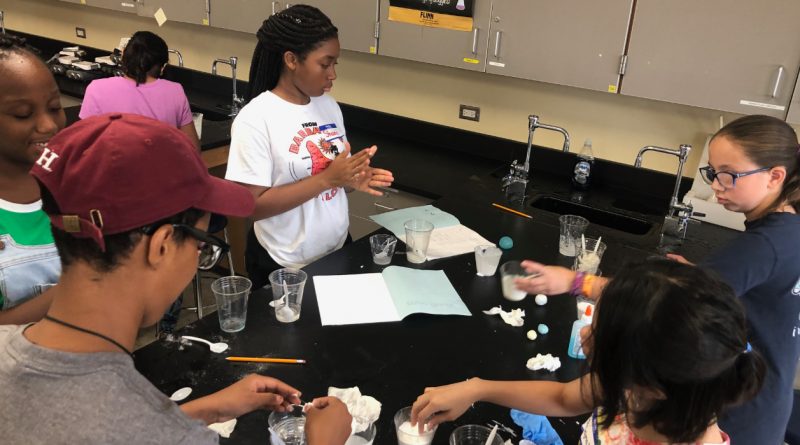Making Bouncy Balls
Introduction & Motivation
Once chemical engineers have determined the properties/materials they need for a task, they have to make the material and experiment with different compositions and manufacturing techniques. This activity will let students experiment with changing the composition (“recipe”) of three different polymer mixtures and see how this affects the product.
In this activity, students will be given the materials to make three different types of polymeric bouncy balls, told the order to add them, and then must experiment to find the optimal composition and process to make their product.
Recalling from the earlier Human Polymers exercise, a cross-link connects one polymer chain to another and makes the overall material more tough. All three of the mixtures in this project involve cross-linking a polymer. The three polymers are the Glue-All, the Glue Gel, and the liquid latex. The borax cross-links the glues, and the acetic acid cross-links the liquid latex.
Materials
- Borax
- Elmer’s White Glue-All
- Elmer’s Blue Glue Gel
- Liquid Latex Rubber
- 5% acetic acid (white vinegar)
- Small paper/plastic cups
- Plastic stirring rod or wooden stick
- Pipettes
- Tap water
- Small sealable plastic bags
- Ruler/yardstick
- Food coloring
- Store bought bouncy balls
Procedure
This activity lets students explore the roles different ingredients play in making the final material. Below are the compositions and procedures listed are for three types of optimal bouncing balls, but let students mix the ingredients in their own proportions. (Make sure they record their recipes and methods!) It might take them a while to catch on, but once they do they might come up with something surprising!
Any food coloring can be added after the first step and mixed in. Be careful to monitor this, since many students overestimate how much they need!
Ball #1: White Elmer’s Glue-All and Borax
- Measure 30 mL (2 tbsp) of glue into plastic cup
- Add 1 gram (½ tsp) of Borax powder to glue
- Stir until the mixture clumps and sticks to stirring stick
- Remove clump of polymer from cup with stick, hold under running water and shape into ball
- Pat the ball dry
Ball #2: Blue Elmer’s Glue Gel and Borax
- Measure 30 mL (2 tbsp) of glue into plastic cup
- Add 1 gram of Borax powder to 2.5 mL (½ tsp) of water, and stir until powder is wet
- Add Borax solution to glue
- Stir until the mixture clumps and sticks to stirring stick
- Remove clump of polymer from cup with stick, hold under running water and shape into ball
- Pat the ball dry
Ball #3: Liquid Latex and Vinegar
- Measure 15 mL (1 tbsp) of liquid latex rubber into plastic cup
- Pour 15 mL (1 tbsp) of water into cup and stir to mix
- Slowly add 15 mL (1 tbsp) of vinegar using pipette while stirring continuously
- When the mixture takes on the consistency of “rubber,” remove it from the cup. Hold it under running water and shape into a ball.
- Pat the ball dry
Once the balls are created, their quality can be tested by measuring how high they bounce when dropped from the same height as a store-bought bouncy ball.
Discussion
- How did the composition of the bouncy ball affect how high it bounced after dropping it? Did the methods by which the balls were made have an affect?
- How do cross-links affect bounciness? Remember, this is related to how much of the cross-linking agent is added!
- How could we change our recipe or methods to improve the bounce height?
- Great! Now that we’ve figured out the best bouncy ball, we want to share it with the whole world. If you had to make a million of these bouncy balls, how do you think you would do it?

